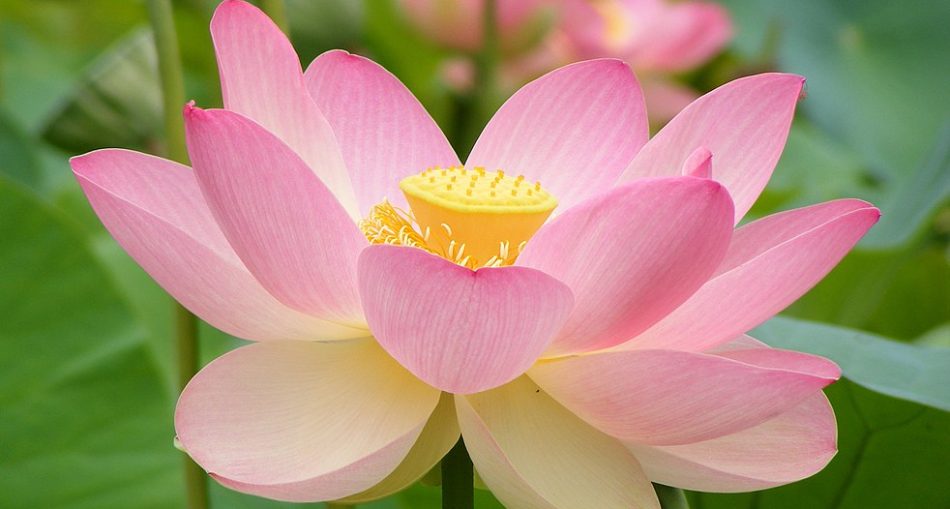You can find these colourful pond flowers and their distinctive waterproof leaves growing in waterways all over Guyana. The Lotus plant is known by several names including the Sacred Lotus, Indian Lotus, Egyptian Bean, and Bean of India. The scientific name of the Sacred Lotus is Nelumbo nucifera. They are sacred in the Hindu religion and Buddhism. Its delicate features make it a common, decorative plant in aquatic gardens and are even resistant to pollution. Lotus flowers have the ability to bloom in the murkiest of waters and because of this, it is revered as a symbol of purity.
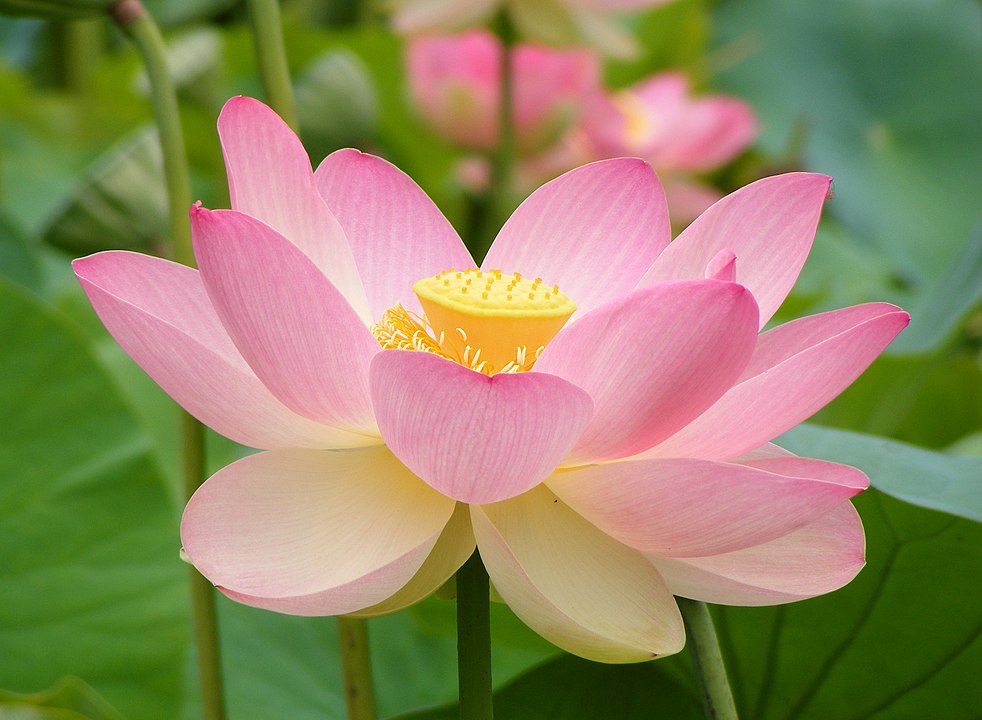
Lotus Flower – By Peripitus – Own work, CC BY-SA 4.0, https://commons.wikimedia.org/w/index.php?curid=4095376
Origins of the Sacred Lotus
The Sacred Lotus is native to central and northern India, Indochine, and East Asia. It also grows in countries like Russia, Sri Lanka, New Guinea, Australia, the Caribbean and Guyana. However, the earliest knowledge of the lotus was depicted in paintings in Egypt.
Scientific Classification of the Sacred Lotus
- Kingdom: Plantae
- Clade: Tracheophytes
- Clade: Angiosperms
- Clade: Eudicots
- Order: Proteales
- Family: Nelumbonaceae
- Genus: Nelumbo
- Species: N. nucifera
Description of the Sacred Lotus
The Lotus plant is aquatic, meaning it lives in water. It is anchored into the soil at the bottom of rivers and pond by its roots. The leaves, flowers and bus float on the surface of the water. The leaves of the Lotus plant are green, very broad and has the ability to resist water; the water droplets roll right off the leaves. They can grow as large are eighty (80) centimetres or thirty (30) inches in diameter. The Lotus flowers begin as buds underwater, making their way upwards and breaking through the surface of the water. The delicate, pink and white hued flowers grow from thick stems several centimetres above the leaves. The flowers grow up to thirty (30) centimetres in diameter and have an arrangement of petals. Sometimes they have few petals, semi-double petal, double petal, heavy petal, and multiple petals. Leaf stalks are sometimes two hundred (200) centimetres longs with a horizontal spread of one (1) metre.
Interesting Tip
- The Lotus is the National Flower of India and Vietnam.
- A lotus plant can live for more than a thousand years.
- It has the ability to revive after a state of inactivity.
- A seed about one thousand and three hundred (1300) years old was successfully grown in 1994,
- The lotus plant can even survive winter as long as its root is in good soil.
Uses of the Sacred Lotus
- Lotus are grown in water gardens and are sometimes their main attraction.
- Lotus buds and flowers are used in Hindu prayers and in their ceremonies.
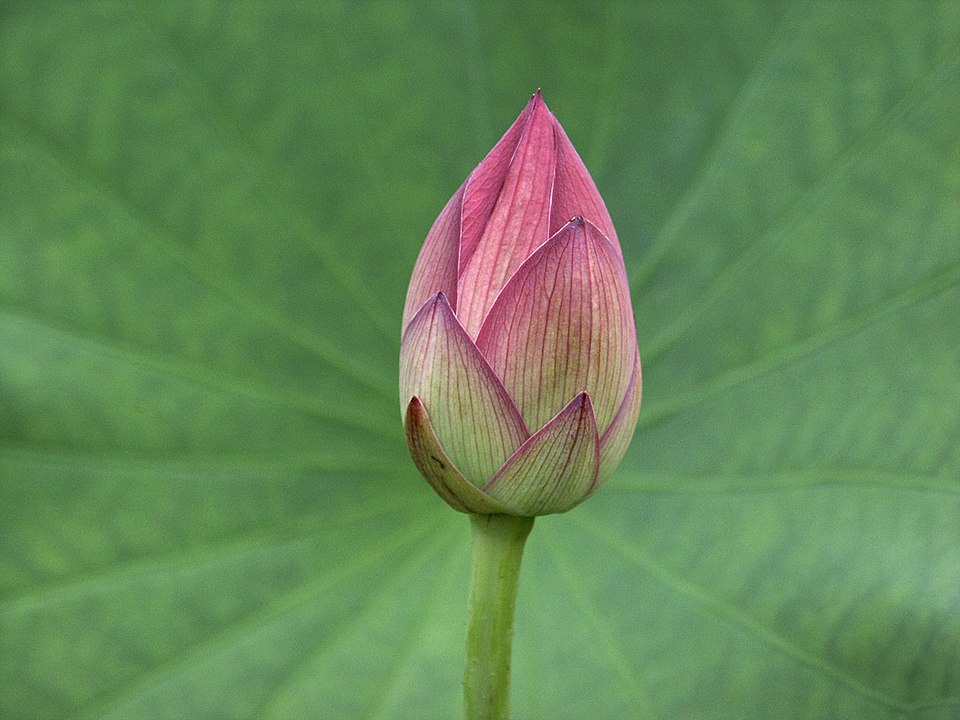
A Lotus flower bud -Photo by By Frank “Fg2” Gualtieri – Own work, Public Domain, https://commons.wikimedia.org/w/index.php?curid=130397
- The roots of Lotus plants can be boiled and eat, providing you with healthy nutrients. It is a very common ingredient in many Asian dishes and prepared in a variety of ways.
- Lotus roots can reduce blood sugar and cholesterol levels in your body. This is because the roots contain complex carbohydrates and fibre, which work to manage your body’s cholesterol and blood sugar. In addition, these two nutrients help to maintain a steady digestive process.
- One of the most common uses of Lotus is its use as food. The rhizomes or stems of the lotus plant contains a large number and amount of minerals and nutrients, like Vitamin C, which are important for the proper functioning of your body. Potassium, also found in the stem, helps to regulate blood pressure.
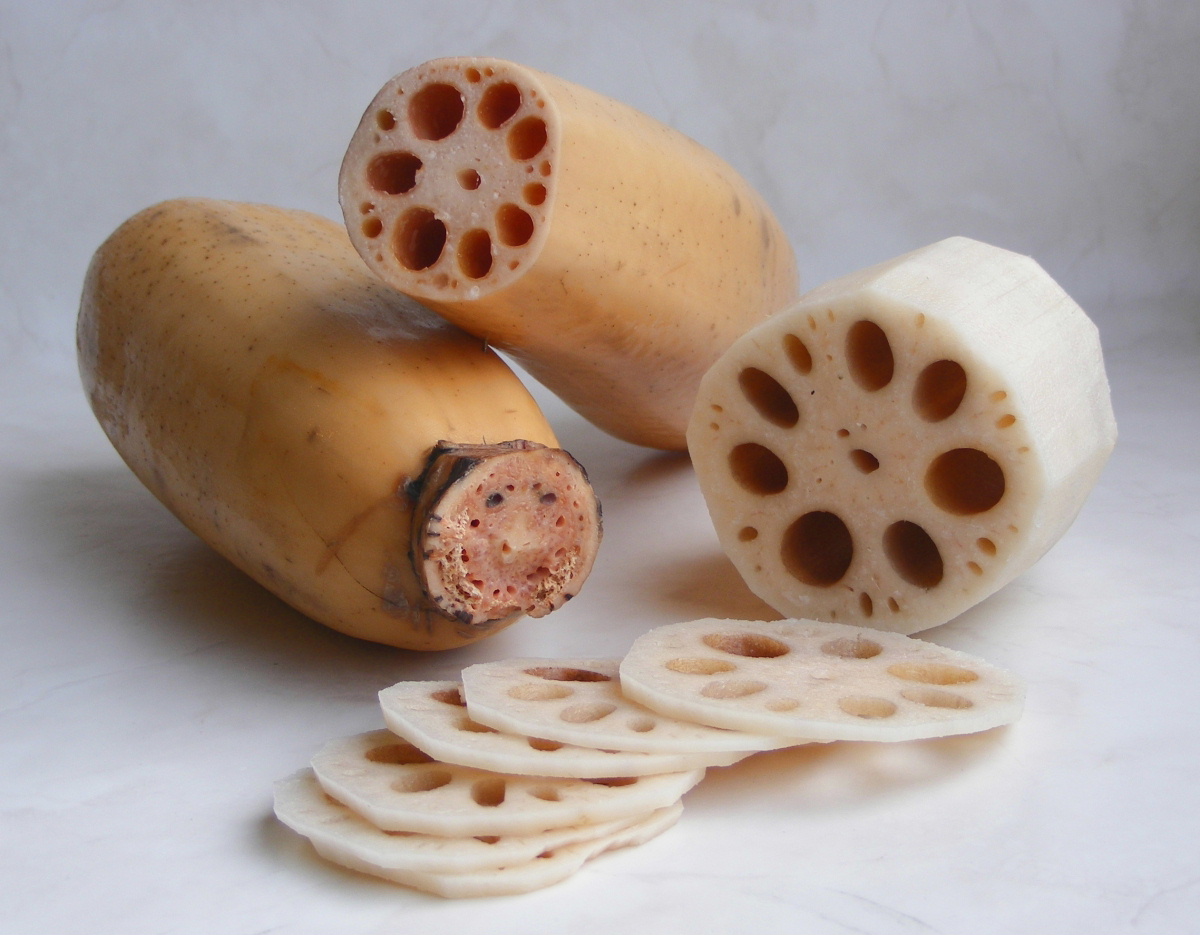
Lotus Stems (Rhizomes) – Photo By FotoosRobin – originally posted to Flickr as Lotus root, CC BY-SA 2.0, https://commons.wikimedia.org/w/index.php?curid=4826529
- In traditional Chinese medicine, extracts made from Lotus leaves and roots are used to regulate the menstrual cycle and reduce excess bleeding. Drinking lotus root juice or soup may even help to avoid anaemia after your period.
- The seeds of the lotus plant are used as a traditional Chinese medicine to treat diarrhoea.
- The Lotus seeds are anti-inflammatory and have significant anti-oxidant properties.
- Lotus seeds are also edible. Many people eat them fresh and raw but they can be added to puddings and pastries.
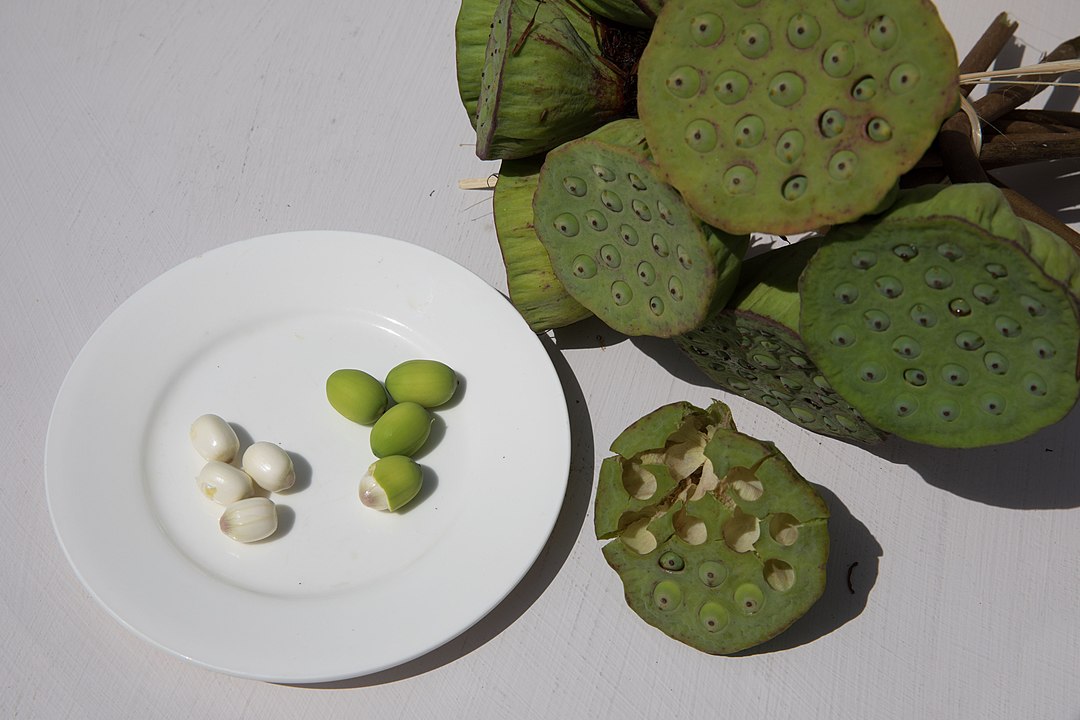
Seeds of the Lotus plant – Photo By Basile Morin – Own work, CC BY 4.0, https://commons.wikimedia.org/w/index.php?curid=64302105
About Lotus
Because lotus flowers can bloom even in the darkest water, it is symbolic in some religions. The lotus flower is said to be like the human being, born into a world of pain and suffering, in which they need to overcome these struggles to reach spiritual enlightenment. Religious reasons aside, Nelumbo nucifera or the Lotus plant is a breathtaking sight. They are found growing almost anywhere Guyana where there are bodies of water, adding beauty and a sense of tranquillity wherever they grow.
Article References
- https://www.flowerglossary.com
- https://www.flowerglossary.com/lotus-flowers-meaning/
- https://en.wikipedia.org/wiki/Nelumbo_nucifera
- https://www.onetribeapparel.com/blogs/pai/meaning-of-lotus-flower
- https://www.healthline.com/health/8-uses-for-lotus
- https://triedandsupplied.com/saucydressings/lotus-seeds/
Discover more from Things Guyana
Subscribe to get the latest posts sent to your email.

